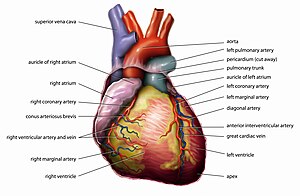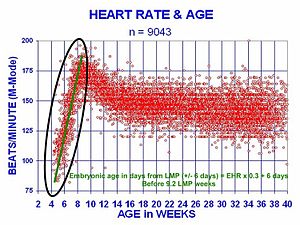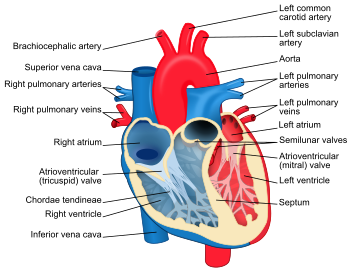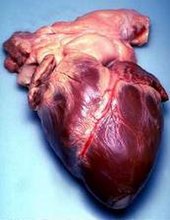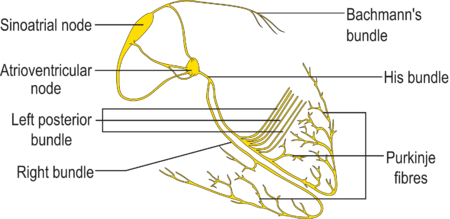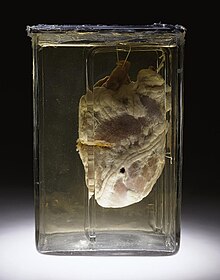Heart
This article is about the organ in various animals. For the human heart, see Human heart. For other uses, see Heart (disambiguation).
"Cardiac" redirects here. For the cardboard computer, see CARDboard Illustrative Aid to Computation.
| This article needs additional citations for verification. Please help improve this article by adding reliable references. Unsourced material may be challenged and removed. (July 2009) |
 | Normal heart sounds Normal heart sounds as heard with a stethoscope |
| Problems listening to this file? See media help. | |
The vertebrate heart is composed of cardiac muscle, which is an involuntary striated muscle tissue found only in this organ, and connective tissue. The average human heart, beating at 72 beats per minute, will beat approximately 2.5 billion times during an average 66 year lifespan. It weighs approximately 250 to 300 grams (9 to 11 oz) in females and 300 to 350 grams (11 to 12 oz) in males.[1]
